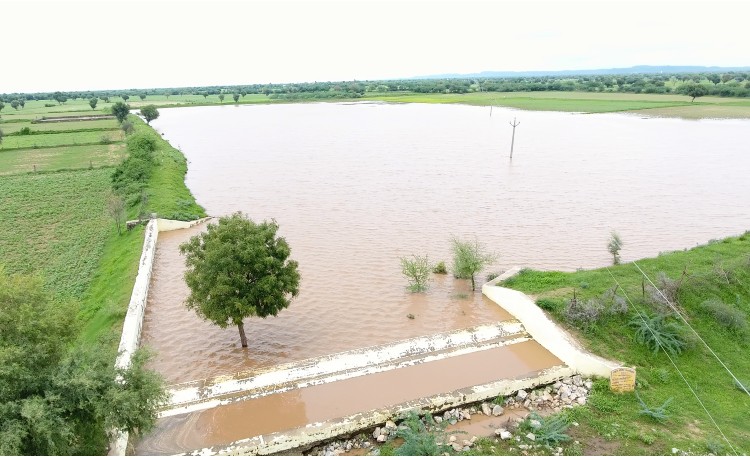Water conservation is the need of the hour, as India’s water crisis deepens and the impacts of climate change create more and more uncertainty – particularly in India’s vulnerable rural and remote interiors, where poverty is rife.
However, we need to look no further for solutions, than beyond our sacred traditional systems of water harvesting, which have provided water security for generations of Indians in some of the driest territories our harsh environment has to offer. Sadly most have fallen into disrepair with the advent of the Indian Public Works Department and centralisation of water out of the hands of the very people it supports – the community.
By restoring our traditional systems and empowering local people to take control of their water structures, we can create drought resilient communities and ensure agricultural livelihoods, which are the lifeblood of the country, are sustained.
The beauty of these traditional systems – including ponds, kuhls, johads, khadins and taankas – is that whilst they capture rainwater as and when it falls, they also play an important role in augmenting ground water levels – which helps keep water in wells for household purposes, and supports groundwater access for irrigation purposes. It is a win-win situation.
Watershed development is another proven approach to bringing water back to communities that have run dry. Taking a holistic approach across an entire watershed, enables a community to unite, identify local, relevant solutions (with guidance from NGOs and other technical partners) and be a part of the solution. The journey undertaken is just as important as the end result, for this is where valuable knowledge and experience is gained which becomes embedded in the community to effectively manage water going forward.
The climate is changing and nowhere is this more acutely felt, than in the increased impact on water. India – with its 1.2 billion population and burgeoning economy – has an increasing thirst for this declining resource, and is therefore highly vulnerable to the shocks of climate change – be it in drought or flood.
And no other sector is as vulnerable as the agricultural economy. Not only is water vital to quench our thirsts, but it is the backbone of the Indian agricultural industry which feeds 17.5% of the global population*. It is essential to support our own food security! Farmers therefore need to adopt more water efficient agricultural practices, such as drip and micro irrigation, along with more water efficient crops. But this conversion will require an enormous amount of behaviour change among a segment which consists of 90% small and marginal landholders – who themselves are hand to mouth and largely uneducated.
There is an important role for NGOs, civil society, Governments and corporates to play in this behaviour change. However to be sustainable, water conservation techniques must involve local people – only then, can effective water management continue, long after NGOs and the like are gone.
Capacity building, education and demonstrations are required to engage communities in rewriting their own water story. Only then, can water conservation techniques – tackling both the supply and demand for water – be taken forward, with ownership and management by the very people who they affect.
These, and many more answers to India’s complex water crisis exist, if only we can work together, systematically and collaboratively – helping bring water back to our rural communities, who need it the most.
Source: http://www.rgics.org/wp-content/uploads/Working-Paper_Indias-Water-Crisis.pdf


.png)
.png)



0 Comment